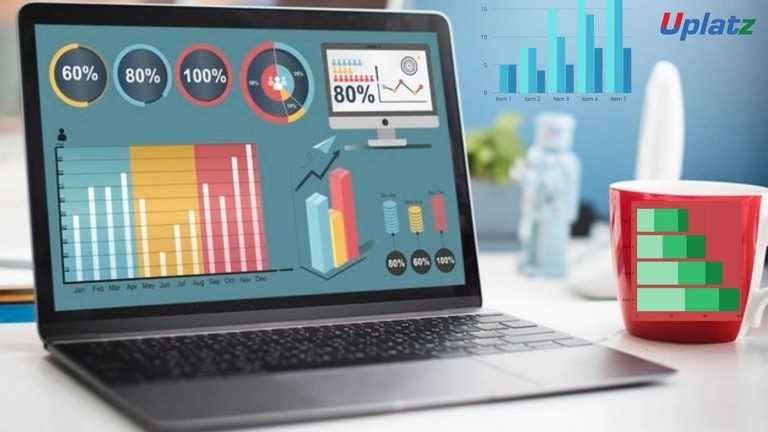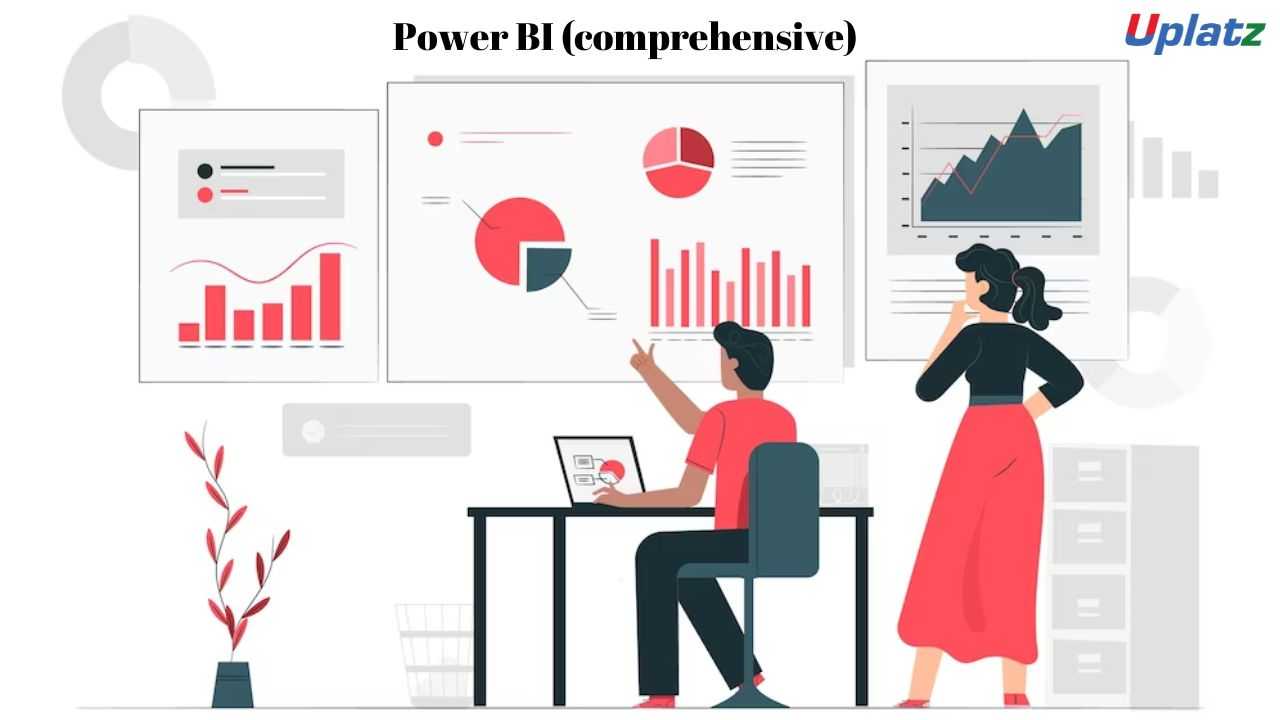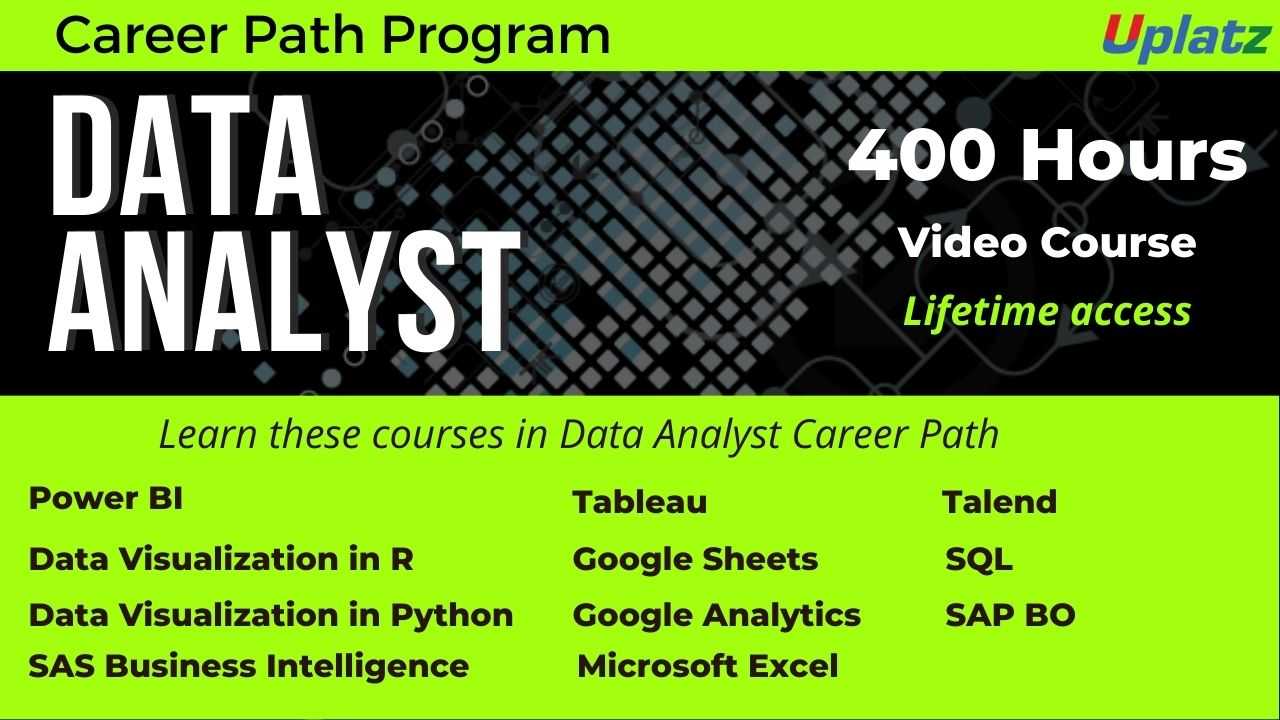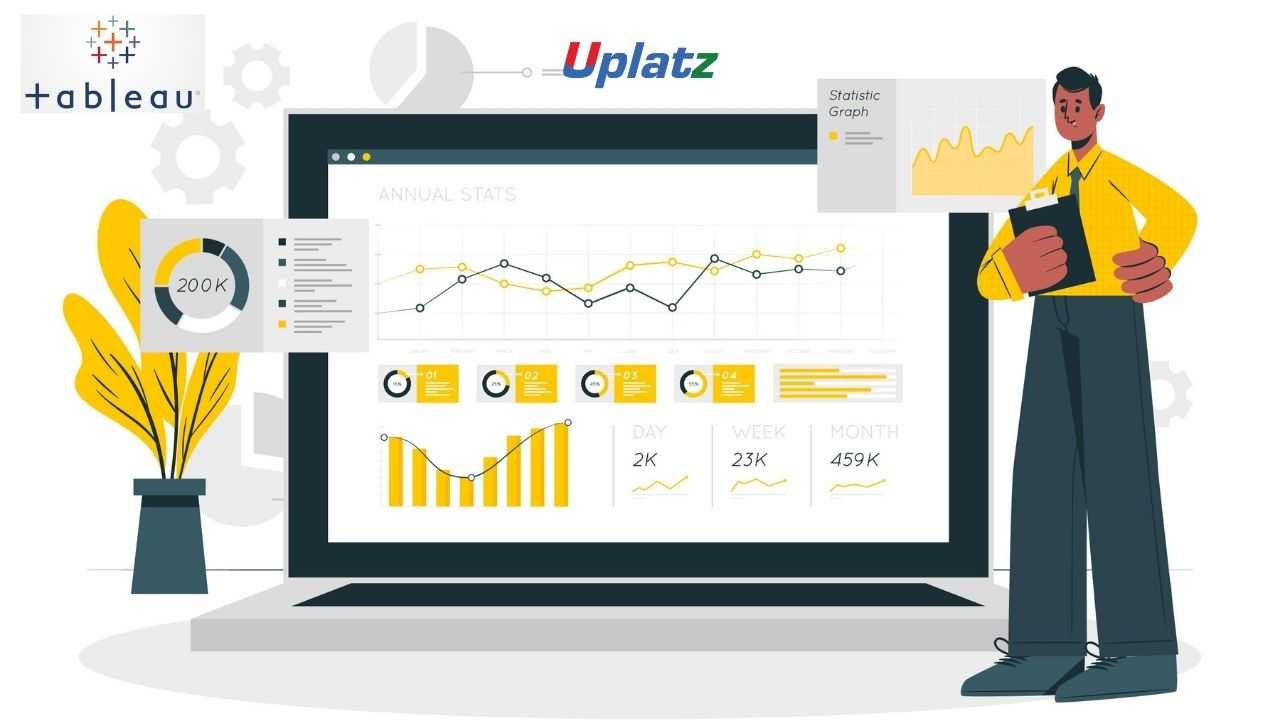Business Intelligence Specialization
Understand BI, Analytics, Data Warehousing, Business Operational Intelligence. Apply analytics to real-life scenarios. Become Business/Data Consultant Price Match Guarantee
Full Lifetime Access
Access on any Device
Technical Support
Secure Checkout
Course Completion Certificate
Price Match Guarantee
Full Lifetime Access
Access on any Device
Technical Support
Secure Checkout
Course Completion Certificate
 83% Started a new career
BUY THIS COURSE (
83% Started a new career
BUY THIS COURSE (GBP 12 GBP 29 )-
 93% Got a pay increase and promotion
93% Got a pay increase and promotion
Students also bought -
-

- Power BI (comprehensive)
- 18 Hours
- GBP 12
- 471 Learners
-

- Career Path - Data Analyst
- 400 Hours
- GBP 32
- 6488 Learners
-

- Tableau (comprehensive)
- 20 Hours
- GBP 12
- 372 Learners

Business intelligence (BI) is the analysis & dashboarding of data for businesses. It encompasses data collection and data warehouse administration, but is most often connected with data analysis, insight gathering, and reporting. BI transforms raw data from many internal and external sources into usable metrics that can be utilised in operations, planning, product development, strategic management, and other divisions of a business using data mining technology, tools, and methodologies.
To help firms make more data-driven choices, business intelligence (BI) incorporates business analytics, data mining, data visualisation, data tools and infrastructure, and best practises. In practise, you've got contemporary business intelligence when you have a holistic perspective of your company's data and can utilise it to drive change, reduce inefficiencies, and swiftly adjust to market or supplier changes.
Business intelligence (BI) is essentially a set of tools that integrates business analytics, data mining, data visualisation, infrastructure, and best practises to assist businesses in making more data-driven choices. The Business Intelligence Certification course will cover the fundamentals of the field, including who a Business Intelligence expert is, how different BI tools work, and how it can assist businesses in making better data-driven choices.
Uplatz offers this detailed Business Intelligence Course for Beginners to help you get a solid footing in the world of data analytics and BI thus creating a foundation for you to make a premium career starting as Data Analyst/Consultant or a Data Scientist in any industry sector whether it be retail, telecom, energy, manufacturing, technology, etc.
This BI & Analytics course will change the way you think about using data to make better choices. Recent breakthroughs in data-collection technology have altered how businesses make educated and successful business choices. The business intelligence course, which is taught by industry professionals, focuses on how data may be utilised to effectively match supply and demand in a variety of corporate contexts. You will learn how to forecast future demand uncertainties, anticipate the results of competing policy options, and determine the optimal course of action in the face of risk in this course. The course will present concepts and ideas that give insights into a wide range of real-world business situations, as well as the techniques and tools available for quantitatively addressing these concerns and the issues associated in acquiring the necessary data.
Uplatz will award Course Completion Certificate at the end of the course.
Course/Topic - Business Intelligence Specialization - all lectures
-
In this lecture session we learn about basic introduction to business intelligence and also talk about factors of business intelligence in brief.
-
In this tutorial we learn about business Intelligence, as a technological concept, which began shortly after the 1988 international conference, The Multiway Data Analysis Consortium, held in Rome. The conclusions reached at this conference jump-started efforts for simplifying BI analysis, while making it more user-friendly.
-
In this lecture session we learn about The general process of business intelligence is as follows: Gathering data and organizing it through reporting. Turning it into meaningful information through analysis. Making actionable decisions aimed at fulfilling a strategic goal.
-
In this lecture session we learn that Data Warehousing may be defined as a collection of corporate information and data derived from operational systems and external data sources and also talk about features of data warehousing.
-
In this lecture session we learn about Business intelligence (BI) combines business analytics, data mining, data visualization, data tools and infrastructure, and best practices to help organizations to make more data-driven decisions.
-
In this tutorial we learn about Apache HTTP Server is a free and open-source web server that delivers web content through the internet. It is commonly referred to as Apache and after development, it quickly became the most popular HTTP client on the web.
-
In this lecture session we learn about NoSQL is an approach to database management that can accommodate a wide variety of data models, including key-value, document, columnar and graph formats. A NoSQL database generally means that it is non-relational, distributed, flexible and scalable.
-
In this lecture session we learn about basic introduction of data analytics and also talk about features and functions of data analytics.
-
In this lecture session we learn about Embedded BI (business intelligence) is the integration of self-service BI tools into commonly used business applications. BI tools support an enhanced user experience with visualization, real-time analytics and interactive reporting.
-
In this lecture session we learn about Designing a collection strategy is one way to ensure that your accounts receivable stays under control and you continue to collect your cash. Without one, there is disorganization, disconnections, miscommunications and just simply chaos in the accounts receivable department.
-
In this tutorial we learn about Survival analysis is a branch of statistics for analyzing the expected duration of time until one event occurs, such as death in biological organisms and failure in mechanical systems.
-
In this lecture session we learn about Geospatial analysis is the gathering, display, and manipulation of imagery, GPS, satellite photography and historical data, described explicitly in terms of geographic coordinates or implicitly, in terms of a street address, postal code, or forest stand identifier as they are applied to geographic models.
-
In this lecture session we learn about Data mining is used to explore increasingly large databases and to improve market segmentation. By analyzing the relationships between parameters such as customer age, gender, tastes, etc., it is possible to guess their behavior in order to direct personalized loyalty campaigns.
-
In this lecture session we learn about It is the simplest unsupervised learning algorithm that solves clustering problems. K-means algorithm partitions n observations into k clusters where each observation belongs to the cluster with the nearest mean serving as a prototype of the cluster.
-
In this lecture session we learn about Density-based spatial clustering of applications with noise (DBSCAN) is a well-known data clustering algorithm that is commonly used in data mining and machine learning.
-
In this lecture session we learn about Regression analysis is a reliable method of identifying which variables have impact on a topic of interest. The process of performing a regression allows you to confidently determine which factors matter most, which factors can be ignored, and how these factors influence each other.
-
In this lecture session we learn about machine learning techniques in business intelligence and also talk about features and function of machine learning techniques in brief.
-
In this lecture session we learn about machine learning is the necessary piece for truly self-service BI tools. BI tools with machine learning implementations not only enable deeper insights into data, but they also empower business people to take analysis into their own hands.
-
In this lecture session we learn about Predictive analytics combining several data analysis techniques, such as machine learning, data mining, and statistics.
-
In this lecture session we learn about Crowdsourced data collection is a participatory method of building a dataset with the help of a large group of people. This page provides a brief overview of crowdsourced data collection in development and highlights points to consider when crowdsourcing data.
-
In this lecture session we learn about basic introduction to business analysis and also talk about features and functions of business analysis.
-
In this tutorial we learn about Data models define how the logical structure of a database is modeled. Data Models are fundamental entities to introduce abstraction in a DBMS.
-
In this lecture session we learn about deep dive into data warehousing and also talk about some key features of deep dive data warehousing.
-
In this lecture session we learn about how we reduce the development time to market and also talk about common patterns in deep dive into data warehousing and also talk about features of patterns.
-
In this lecture session we learn about basic introduction to data warehousing and also talk about features of data warehousing.
-
In this lecture session we learn about Feature extraction for machine learning and deep learning. Feature extraction refers to the process of transforming raw data into numerical features that can be processed while preserving the information in the original data set. It yields better results than applying machine learning directly to the raw data.
-
In this lecture session we learn about Integration Platform as a Service (iPaaS) is a suite of cloud services enabling development, execution and governance of integration flows connecting any combination of on premises and cloud-based processes, services, applications and data within individual or across multiple organizations.
-
In this lecture session we learn about Business intelligence concepts refer to the usage of digital computing technologies in the form of data warehouses, analytics and visualization with the aim of identifying and analyzing essential business-based data to generate new, actionable corporate insights.
-
In this lecture session we learn about Contextual analysis is the systematic analysis—identification, sorting, organization, interpretation, consolidation, and communication—of the contextual user work activity data gathered in contextual inquiry, for the purpose of understanding the work context for a new system to be designed.
-
In this lecture session we learn about Organizational intelligence is the capacity of an organization to create knowledge and use it to strategically adapt to its environment or marketplace. It is similar to I.Q., but framed at an organizational level. While organizations in the past have been viewed as compilations.
-
In this lecture session we learn about the Information Systems Business Analysis program (ISBA) will help you develop critical skills in areas such as: application software, business data analysis and modeling, customer engagement management, business processes, enterprise resource planning, and communications.
-
In this lecture session we learn about Operational intelligence (OI) is an approach to data analysis that enables decisions and actions in business operations to be based on real-time data as it's generated or collected by companies.
-
In this lecture session we learn about Business intelligence (BI) is a technology-driven process for analyzing data and delivering actionable information that helps executives, managers and workers make informed business decisions.
-
In this lecture session we learn about Operational intelligence (OI) is an approach that gives you real-time information about what's happening in your business. It can help you make quick decisions that make your operations better. Cut through the noise of software delivery and break silos with powerful dashboards and reports.
1).Understand and apply business analytics ideas and approaches critically.
2).In various circumstances, identify, model, and solve choice challenges.
3).Interpret outcomes/solutions and choose the best course of action for a particular management issue, whether it's a challenge or an opportunity.
4).Create feasible answers to situations involving decision-making.
This specialization course focuses on the comprehensive aspects of Business Intelligence (BI), covering data warehousing, data visualization, analytics, and strategic decision-making. Participants will gain practical skills and theoretical knowledge essential for leveraging BI in a business environment.
Part 1: Foundations of Business Intelligence
Week 1: Introduction to Business Intelligence
a).Definition and importance of BI
b).Key components: Data sources, data integration, and reporting
c).Overview of the BI lifecycle
d).Hands-on Exercise: Exploring popular BI tools (Tableau, Power BI)
Week 2: Data Warehousing Concepts
a).Understanding data warehousing architecture
b).ETL processes: Extract, Transform, Load
c).Data modeling techniques: Star schema vs. snowflake schema
d).Hands-on Exercise: Designing a basic data warehouse schema
Part 2: Data Management and Preparation
Week 3: Data Collection Techniques
a).Data collection methods: Surveys, databases, web scraping
b).Importance of data quality and integrity
c).Strategies for data cleaning and preprocessing
d).Hands-on Exercise: Cleaning a dataset using Python or R
Week 4: Data Governance and Security
a).Understanding data governance frameworks
b).Best practices for data security and privacy
c).Compliance with regulations (GDPR, HIPAA)
d).Group Discussion: Challenges in data governance
Part 3: Data Visualization and Reporting
Week 5: Principles of Data Visualization
a).Importance of effective data visualization
b).Best practices for designing dashboards and reports
c).Key visualization techniques (charts, graphs, maps)
d).Hands-on Exercise: Creating visualizations in Tableau or Power BI
Week 6: Advanced Visualization Techniques
a).Building interactive dashboards
b).Storytelling with data: Crafting compelling narratives
c).Hands-on Exercise: Developing an interactive report and presentation
Part 4: Analytics in Business Intelligence
Week 7: Introduction to Analytics
a).Types of analytics: Descriptive, diagnostic, predictive, prescriptive
b).Overview of analytical techniques and tools
c).Hands-on Exercise: Conducting basic descriptive analytics using Excel
Week 8: Predictive Analytics and Machine Learning
a).Understanding predictive modeling concepts
b).Overview of algorithms: Regression, classification, clustering
c).Implementing a predictive model using Python
d).Hands-on Exercise: Building and evaluating a predictive model
Part 5: Business Intelligence Strategies
Week 9: Strategic Decision Making with BI
a).Using BI to drive strategic initiatives
b).Key performance indicators (KPIs) and metrics
c).Aligning BI with business objectives
d).Group Activity: Case study on BI-driven decision making
Week 10: Emerging Trends in Business Intelligence
a).The role of AI and machine learning in BI
b).Cloud computing and its impact on BI solutions
c).Future trends and innovations in BI
d).Group Discussion: Exploring case studies of successful BI implementations
Part 6: Capstone Project
Week 11: Capstone Project Preparation
a).Overview of project objectives and expectations
b).Defining project scope: Applying BI to a real-world problem
c).Initial project planning and outlining tasks
d).Group Discussion: Feedback on project proposals
Week 12: Capstone Project Execution
a).Implementing the project using skills learned throughout the course
b).Presenting findings and recommendations to the class
c).Peer reviews and feedback on project presentations
Recommended Resources:
Textbooks:
a)"Business Intelligence Guidebook: From Data Integration to Analytics" by Rick Sherman
b)"Data Visualization: A Practical Introduction" by Kieran Healy
Online Resources:
a).Courses on Coursera, edX, and LinkedIn Learning
b).BI and analytics blogs for the latest trends and insights
Tools:-Tableau, Power BI, SQL, Python, R, and Excel for hands-on practice
Assessment:
1).Weekly quizzes and assignments
2).Mid-term project focused on data visualization and reporting
3).Final capstone project showcasing a comprehensive BI solution
The Business Intelligence for BeginnersCertification ensures you know planning, production and measurement techniques needed to stand out from the competition.
Business intelligence (BI) combines business analytics, data mining, data visualization, data tools and infrastructure, and best practices to help organizations to make more data-driven decisions.
A firm grasp of business strategy and KPIs. A fundamental understanding of SQL and the technical aspects of BI. A well-crafted business intelligence resume. A working understanding of cloud computing and data visualization.
Business Intelligence (BI) requires coding for processing data to produce useful insights. Coding is used in the data modeling and warehousing stages of the BI project lifecycle. However, coding is not required in the other stages of the BI lifecycle. Anyone can start a career in BI with some practice of programming.
Uplatz online training guarantees the participants to successfully go through the Business Intelligence for Beginnerscertification provided by Uplatz. Uplatzprovides appropriate teaching and expertise training to equip the participants for implementing the learnt concepts in an organization.
Course Completion Certificate will be awarded by Uplatz upon successful completion of the Business Intelligence for Beginnersonline course.
The Business Intelligence for Beginners draws an average salary of $105.952 per year depending on their knowledge and hands-on experience. The Business Intelligence for Beginners Admin job roles are in high demand and make a rewarding career.
Business intelligence analysts often move into higher-level jobs within 10 years, including roles such as analytics manager, business intelligence manager, business intelligence architect, and analytics manager.
Business Intelligence (BI) requires coding for processing data to produce useful insights. Coding is used in the data modeling and warehousing stages of the BI project lifecycle. However, coding is not required in the other stages of the BI lifecycle. Anyone can start a career in BI with some practice of programming.
The business intelligence industry has expanded exponentially in recent years and is expected to continue growing. If you want to make the most of data analysis in an established or newly adopted BI system, your team should be data-driven.
Note that salaries are generally higher at large companies rather than small ones. Your salary will also differ based on the market you work in.
1).Business Intelligence/ Business Analyst.
2).Business Intelligence Analyst.
3).Senior Quantitative Analytics Specialist.
Q1. What do you understand by Business Intelligence?
Ans-The term Business Intelligence refers to a collective meaning, including technologies, tools, applications, practices for the data collection, and providing those data to the users, especially to help in running the business or a part of it.In other words, the business analyst’s reports generated and compiled using the Business Intelligence approaches are consumed by the higher management administrative and business executives to make better decisions for the overall maturity of the business.
Q2. What are the primary objectives of Business Intelligence?
Ans-The primary objectives of Business Intelligence are:
1).Business Intelligence is leverage to make the following enterprise-level decisions.
2).Business Intelligence helps in identifying the wrong tracks and approaches of a business.
3).Business Intelligence can cluster the data for analysis and then compile them to monitor corrective actions.
4).Business Intelligence is also useful for determining whether a company is executing as per plan.
5).Identification and extraction of trends and insights from business are possible using Business Intelligence tools.
Q3. What are the popular Business Intelligence (BI) tools used by Business Analysts?
Ans-
1).The popular Business Intelligence (BI) tools used by Business Analysts are:
2).Microsoft BI
3).Cognos
4).MicroStrategy
5).SAS
7).Business Objects
8).OBIEE
9).Hyperion
Q4.How will you implement a BI system in your professional approach?
Ans-There are three steps to implement a BI system:
1).Extract the raw data from the corporate database. The data might be available across various heterogeneous databases.
2).Then, the data is cleaned to put them in the data-warehouse by linking the table and forming the data cubes.
3).Lastly, using BI systems, business analysts can extract business insights, request ad-hoc reports, analyze those clean datasets, and predict the business decisions.
Q5.How will you define OLAP (Online Analytical Processing)? (This is one of the most common business intelligence interview questions)
Ans-OLAP (Online Analytical Processing) is a technological concept applied in various BI tools and applications that helps in executing complex analytical calculations. OLAP analyzes the trends, performs intricate calculations (like aggregation, summation, count, average, min, max), and carries out sophisticated data modeling in a BI system. OLAP systems’ primary objective is to diminish the response time of queries and improve the effectiveness of the calculated reports.
Q6.How will you define OLTP (Online Transaction Processing)?
Ans-OLTP (Online Transaction Processing) systems are the vast collection of small data transactions like insert, delete, and update. These are operational databases that produce quick processing of a query. It also determines the integrity and consistency of data. It is the number of transactions per second that helps in measuring the efficiency of an OLTP system.
Q7.Define the term Data Warehousing?
Ans-Data Warehousing is the repository system used to analyze and report data from various heterogeneous sources and forms. These data will be available from the oracle database, SQL Server, Postgres, or a simple excel sheet. The warehouse uses one central mechanism called the repository, through which the business analyst can fetch all historical reports associated with that data.
Q8.Mentioned some characteristics of the Data warehouse.
Ans-A data warehouse is a separate database responsible for storing historical information records and is kept separate from an operational database.Processed and analyzed data from a data warehouse helps make top management strategic and tactical decisions based on the analysis.
Analyzing data in the data warehouse helps the business analysts and users see the current business trends.The data warehouse is also responsible for consolidating historical data analysis.
Q9.What are the key advantages of using BI systems?
Ans-The key advantages of using BI systems are:
1).It helps boost productivity and makes it possible to create a business report with just a single click.
2).It also helps increase the visibility of the data analysis and possibly identify those areas that demand attention.
3).As per the organization’s goals, the BI system sets the accountability.
4).BI systems automate several tasks by offering predictive analysis, benchmarking, modeling figures, and statistical calculations using different methodologies.
Q10. Mention two disadvantages of Business Intelligence Systems.
Ans-The two disadvantages of Business Intelligence Systems are:
1).The BI systems are costly, so using them for small and medium scale enterprises will prove expensive.
2).Implementing BI systems for the data warehouse is complicated. Hence, the complexity of using it is another drawback of it.









